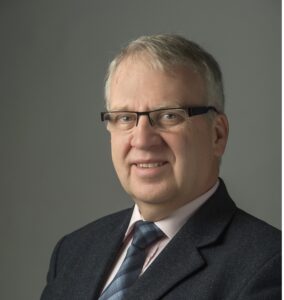
In the context of the European Project Modus, we are inviting experts from the air and rail sectors to give their opinion on the future of intermodality in order to inspire others.
Our guest today is Marc Guigon. Marc Guigon is the Director of the Passenger Department at UIC, the International Union of Railways. He has a strong background in railway activities, having managed rolling stock workshops, research teams, and freight departments at SNCF, the national French railway undertaking.
He joined UIC in June 2012 and is responsible for passenger activities, including the global development of high-speed railways, train stations, ticket distribution, regional and commuter train services and increasing the use of trains for tourism.
Seamless and smart door-to-door multimodality and an enhanced traveller experience are a high priority for all modes of transport in Europe. Stronger combined air-rail mobility and cooperation will play a significant role in achieving these objectives. The Modus project and other initiatives have been assessing the progress towards multimodality within Europe. It showed that we still have a long way to go in this regard, and we would like to ask you to share your insights on how true multimodality can be achieved:
What are the challenges to improving air + rail mobility in Europe? And what needs to be changed?
MG: To improve air – rail mobility in Europe we must first improve passenger experience.
Passenger experience may be bettered in these 3 ways:
- For booking tickets on a unique air and rail platform the main barriers are:
– Different booking horizons (1 year for planes, several months for rail)
– Different terminology and processes
– Different standards
– Different legal / commercial usages
UIC and IATA are working to find solutions for these 4 points by integrating the railway standard Open Sales and Distribution System with airline standards. Therefore, customers can book a plane ticket and a rail ticket on the same platform.
- Arriving at the airport train station
– Signs need to be standardised
– Luggage handling issues must be over
– The lack of links between train stations and airports needs to be fixed
– PRM transfers to be standardised – long corridors – information
- Using plane and rail: simple transfer with the same ticket
- Real time information: delays, other problems
- Language barriers
- Luggage
Which current or future business models can enable multimodality?
MG: Commercial and legal agreements between airline companies and railway undertakings.
- Common areas and amenities for meetings.
- Common commercial areas (shops) – duty free
- Financial support from authorities
What infrastructure adaptions are needed to make multimodality a reality?
MG: High-speed lines (services) arriving at airports
- Infrastructure to handle luggage
- Meeting or teleworking areas
- VIP commodities
What should travellers expect in the future in terms of personalisation and required travel services?
MG: People travel for either business or leisure.
- For business: Time and comfort are important
- For leisure: Cost and information are important
What should be implemented first in your sector?
MG: Ticket standardisation
